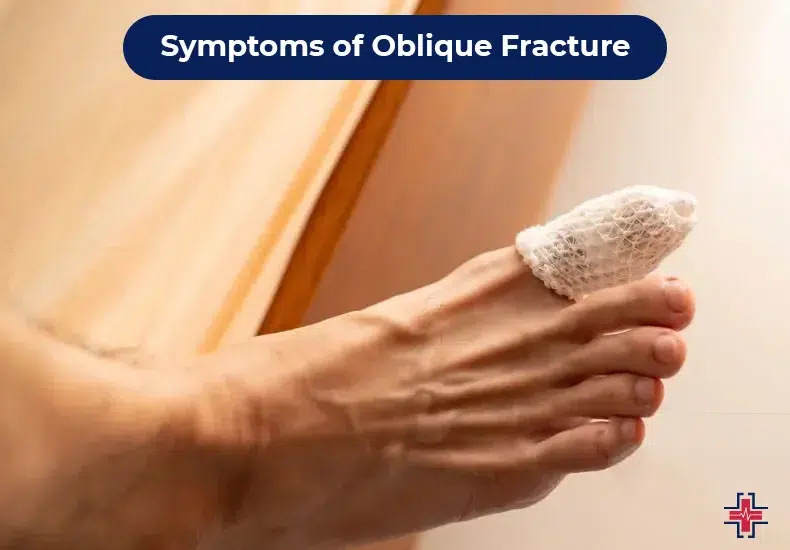Introduction
An oblique fracture is a type of bone break that occurs at an angle across the bone shaft. These fractures can result from various traumatic events, such as falls, direct blows, or accidents. Oblique fracture injuries often require immediate medical attention to prevent complications and ensure proper healing. In this article, we will explore the causes, symptoms, diagnosis, and treatment options for this type of fracture.
What Is an Oblique Fracture?
An oblique fracture is characterized by a diagonal break in the bone, typically occurring due to sudden and intense force applied at an angle. This fracture type differs from transverse or spiral fractures in that it creates an angular split rather than a horizontal or twisting break.
Common Causes of Oblique Fractures
High-impact injuries – Car accidents, sports injuries, or falls can cause significant force on the bones.
Direct trauma – A strong, direct hit on a bone can lead to an oblique break.
Weak bones – Conditions like osteoporosis or bone infections weaken the bone structure, making it more susceptible to fractures.
Repetitive stress – Excessive strain on a particular bone, often seen in athletes, can eventually cause an oblique fracture.
Symptoms of an Oblique Fracture
Recognizing the symptoms of an oblique fracture is crucial for prompt medical intervention. Common signs include:
Intense pain at the site of the break
Swelling and bruising
Visible deformity or unnatural positioning of the affected area
Limited mobility and inability to bear weight
Tenderness and sensitivity to touch
Diagnosis of an Oblique Fracture
To confirm an oblique fracture, healthcare professionals may perform:
Physical examination – Checking for swelling, bruising, and tenderness.
X-rays – Providing a clear image of the fracture.
MRI or CT scans – Offering a more detailed view if necessary, especially for complex fractures.
Treatment Options for Oblique Fractures
Non-Surgical Treatments
For minor or stable oblique fractures, doctors may recommend:
Immobilization with a cast or splint to keep the bone in place.
Pain management using prescribed medications or over-the-counter pain relievers.
Physical therapy after initial healing to restore movement and strength.
Surgical Treatments
Severe oblique fractures often require surgery, including:
Internal fixation – Using metal plates, screws, or rods to stabilize the bone.
External fixation – Employing an external frame to hold bones in place during healing.
Recovery and Rehabilitation
Recovery from an oblique fracture varies based on the severity and treatment method. The healing process generally includes:
Initial rest and immobilization
Gradual physical therapy to regain strength
Regular follow-ups with a doctor to monitor healing progress
Preventing Oblique Fractures
To reduce the risk of an oblique fracture, consider:
Maintaining strong bones through a diet rich in calcium and vitamin D
Wearing protective gear during sports and physical activities
Practicing fall prevention strategies, especially for older adults
Engaging in strength-training exercises to improve bone density
FAQs
1. How long does it take for an oblique fracture to heal?
Healing time varies but typically ranges from 6 to 12 weeks, depending on the severity and treatment method.
2. Can you walk on an oblique fracture?
It depends on the location and severity of the fracture. Weight-bearing should only be done under medical guidance.
3. Do oblique fractures require surgery?
Not always. Mild fractures can heal with immobilization, but severe cases often need surgical intervention.
4. What are the complications of an untreated oblique fracture?
Complications may include improper bone healing, chronic pain, and potential deformity.
5. How can I strengthen my bones to prevent fractures?
Ensure a healthy diet, engage in regular weight-bearing exercises, and take necessary precautions in high-risk activities.
 :
https://erofmesquite.com
:
https://erofmesquite.com












